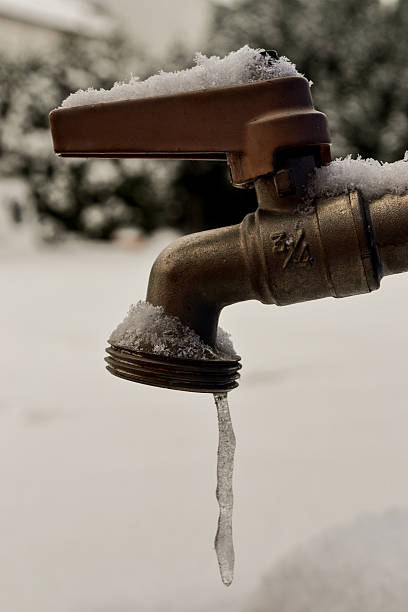Tips to Protect Your Pipes from Cold Weather: Expert Advice
Tips to Protect Your Pipes from Cold Weather: Expert Advice
Blog Article
How do you feel with regards to 6 Ways to Prevent Frozen Pipes?

Cold weather can ruin your pipes, especially by freezing pipes. Below's how to prevent it from occurring and what to do if it does.
Introduction
As temperature levels decrease, the risk of icy pipelines boosts, possibly causing costly fixings and water damage. Comprehending just how to avoid frozen pipes is critical for property owners in cool environments.
Understanding Frozen Pipelines
What creates pipelines to freeze?
Pipes ice up when revealed to temperature levels listed below 32 ° F (0 ° C) for extended durations. As water inside the pipelines freezes, it increases, taxing the pipe wall surfaces and potentially triggering them to break.
Risks and problems
Frozen pipes can bring about supply of water disturbances, home damages, and expensive repair services. Ruptured pipelines can flood homes and trigger substantial architectural damages.
Indicators of Frozen Pipeline
Recognizing icy pipelines early can stop them from breaking.
Just how to determine icy pipes
Seek decreased water flow from taps, unusual smells or noises from pipes, and noticeable frost on revealed pipes.
Prevention Tips
Insulating susceptible pipes
Wrap pipes in insulation sleeves or make use of warmth tape to safeguard them from freezing temperature levels. Concentrate on pipelines in unheated or external areas of the home.
Home heating techniques
Keep indoor rooms effectively heated up, particularly locations with pipes. Open up closet doors to enable cozy air to distribute around pipelines under sinks.
Shielding Exterior Plumbing
Garden hoses and outdoor taps
Separate and drain garden hoses before wintertime. Mount frost-proof faucets or cover exterior taps with protected caps.
What to Do If Your Pipes Freeze
Immediate activities to take
If you suspect frozen pipes, keep taps open up to eliminate pressure as the ice thaws. Make use of a hairdryer or towels soaked in warm water to thaw pipes gradually.
Long-Term Solutions
Architectural modifications
Consider rerouting pipes far from outside wall surfaces or unheated locations. Include added insulation to attic rooms, cellars, and crawl spaces.
Updating insulation
Invest in high-grade insulation for pipelines, attic rooms, and wall surfaces. Proper insulation helps keep constant temperatures and reduces the danger of frozen pipes.
Conclusion
Stopping frozen pipes requires proactive measures and fast reactions. By recognizing the causes, signs, and safety nets, house owners can safeguard their pipes throughout cold weather.
5 Ways to Prevent Frozen Pipes
Drain Outdoor Faucets and Disconnect Hoses
First, close the shut-off valve that controls the flow of water in the pipe to your outdoor faucet. Then, head outside to disconnect and drain your hose and open the outdoor faucet to allow the water to completely drain out of the line. Turn off the faucet when done. Finally, head back to the shut-off valve and drain the remaining water inside the pipe into a bucket or container. Additionally, if you have a home irrigation system, you should consider hiring an expert to clear the system of water each year.
Insulate Pipes
One of the best and most cost-effective methods for preventing frozen water pipes is to wrap your pipes with insulation. This is especially important for areas in your home that aren’t exposed to heat, such as an attic. We suggest using foam sleeves, which can typically be found at your local hardware store.
Keep Heat Running at 65
Your pipes are located inside your walls, and the temperature there is much colder than the rest of the house. To prevent your pipes from freezing, The Insurance Information Institute suggests that you keep your home heated to at least 65 degrees, even when traveling. You may want to invest in smart devices that can keep an eye on the temperature in your home while you’re away.
Leave Water Dripping
Moving water — even a small trickle — can prevent ice from forming inside your pipes. When freezing temps are imminent, start a drip of water from all faucets that serve exposed pipes. Leaving a few faucets running will also help relieve pressure inside the pipes and help prevent a rupture if the water inside freezes.
Open Cupboard Doors
Warm your kitchen and bathroom pipes by opening cupboards and vanities. You should also leave your interior doors ajar to help warm air circulate evenly throughout your home.

I discovered that entry on Prevent Frozen Pipes while surfing around the internet. Remember to take the opportunity to promote this blog if you enjoyed it. Thanks a lot for your time. Return soon.
Call Today Report this page